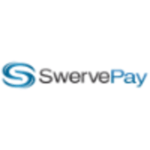One of the most common reasons why companies struggle to get permission for Case Studies is due to clients’ confidentiality issues. These companies have client stories that would make for great Case Studies. However, due to legal, public relations, or marketing reasons, the clients can’t allow the use and publication of their names and logos. Most companies believe that this means they won’t complete those Case Studies. That can’t be further from the truth!
The good news is that obtaining permission for Case Studies is not an all-or-nothing situation. Even if your clients won’t let you use their names and logos in a Case Study, you can still complete those Case Studies. You just need the right approach.
We created this guide based on our own experience with documenting permission for several hundred Case Studies. If you’re unsure if and how you’ll be able to get client approvals, read on to see how SuccessKit handles getting those key permissions for your Case Studies.
The Five Levels of Participation and Permission for Case Studies
There are varying degrees to which your clients will participate in a Case Study or allow you to use their names and logos. We’ve grouped them into the following five categories:
- Level A: These clients agree to let you use their company name, logo, and image of the contact. You’re also welcome to publish the Case Study how you see fit.
- Level B: These clients will let you use their company name, logo, and image of the contact. They also permit you to publish the Case Study with some restrictions.
- Level C: These clients won’t allow you to publish their company name and logo. However, they’ll participate in the Case Study and allow you to share it in certain circumstances or with permission.
- Level D: These clients won’t allow you to create a Case Study with their name and logo. However, they’ll permit you to describe who they are and participate in the Case Study.
- Level F: These clients won’t allow you to use their name and logo and won’t participate in the Case Study.
Each company is going to have a different mix of As, Bs, Cs, Ds, and Fs.
Now you’ll take a closer look at each level of permission and participation. You’ll also review some pointers for how we handle each one. As you read, recognize that each Case Study situation is different and may not fit perfectly into one of the five levels described here. You’ll need to determine how to handle those unique instances on an individual basis.
Level A: Full Participation and Unrestricted Permission
What it means: You have the client’s full participation, as well as permission to use your client’s name and logo in the published Case Study. If there are no confidentiality issues and you have reason to assume the client will be happy to share details, start here. After all, many of your clients will assume you’re requesting what we call Level A when you request participation.
How we handle it: We keep it simple: We ask your clients if they’d be willing to participate in a Case Study and explain that it will be published and shared broadly.
Tip: Sometimes the client contact may be fully on board with creating the Case Study, and the issue is that the Case Study has to be approved by someone else in the client’s legal, public relations, and/or marketing departments. Our approach to this is to ask the client contact if he or she thinks obtaining approval is likely. Though not guaranteed, client contacts are usually able to get approval if they think they can. Otherwise, balance what you know you can get from the client with the risk of getting a lower permission level.
Level B: Full Participation and Restricted Permission
What it means: This is one of the most common Case Study permissions situations. Like in Level A, you have the client’s full participation, as well as permission to use your client’s name and logo in the published Case Study. However, the client wants control over where the Case Study is published. In other words, the client doesn’t want to give broad permission to publish the Case Study wherever you want, but generally is okay with it being published.
How we handle it: We’ll gather information from you regarding any key areas concerning what you want to ensure will be possible with the Case Study. For example, if you definitely want permission for publishing the Case Study on your website, we’ll seek the client’s approval for that. However, unless it’s absolutely necessary, we avoid asking clients about where they’ll allow Case Studies about them to be used before the Case Studies are even created. Often, once clients approve the content, they rarely place too many restrictions on how to use it.
Tip: Clients often want to see the finished Case Study content before agreeing to let you use their name, logo, and photos. They don’t yet know what they’ll allow you to do with the content until they see it. Not only is this request very common, but client reactions to Case Studies are also often better than anticipated. Creating quality content makes getting a client’s approval more likely. Therefore, we create the Case Study at the level you and the client agree to and stay confident that the client will grant permissions once it’s finished.
Level C: Full Participation, Restricted Permission, and No Approval to Publish
What it means: You have these clients’ full participation and permission to use their names and logos in Case Studies. However, the clients won’t agree to have the Case Studies published.
How we handle it: The Level C solution is very often underutilized. This is because companies make the mistake of requesting permission to publish and stop there when they get any pushback. In this case, we create two versions of the Case Study: one with the client’s name and logo and the other anonymous. We ask the client to allow you to share the named version in specific one-on-one situations or with permission. This solution allows you to publish the anonymous Case Study. You also get to keep the named one internal to use as the client allows.
Tip: Use the anonymous Case Study as a lead magnet with a call to action (CTA) such as “Sign up to learn the details of this Case Study!”
Level D: Full Participation but Fully Anonymous
What it means: Level D clients will participate in the Case Study, but won’t permit you to create content using their company names and logos.
How we handle it: We speak to the client about how exactly and closely we can describe the company. Then, we create the Case Study without giving any information that can identify the client. We also learn if the client is open to being named in the future. Often, the client will agree to this in a restricted capacity, like in Level C.
Tip: Often if the client contact doesn’t know what the higher-ups will agree to do, this results in a lack of participation. In this case, we learn what the client contact is comfortable with doing now and proceed accordingly with the Case Study process. You can always add a name and logo to the Case Study or publish it at a future date.
Level F: No Participation and Fully Anonymous
What it means: Level F clients won’t participate in the Case Study. They also won’t grant permission to create content using their company names and logos.
How we handle it: For our clients in this situation, we attempt to replicate an authentic process as much as is possible. After all, if you did great work for your client, there’s no reason you can’t have a valuable, anonymous Case Study. Instead of interviewing the client, we interview your internal employees who are most familiar with the client and situation. We ask that person to really put him- or herself in the client’s shoes and speak from the client’s perspective.
Tip: If getting the client’s approval is tricky, you can opt to make it a priority to make the Case Study subject look really good. Instead of styling the Case Study as you solved a problem for the client, we’ll position it as the client going above and beyond the norm based on your help.
Determining the Minimum Level of Permission for Case Studies
As a SuccessKit client, we first ask you to determine the minimum level of permission and participation for Case Studies you’ll accept from your clients. You can make this standard the same for all of your Case Studies or decide on an individual level based on the situation.
Once you’ve set the minimum, we then ask your clients if they’d agree to the maximum realistic level of permission for Case Studies. If your clients push back, we then propose the minimum you set. This allows you to get the most out of each situation.
SuccessKit clients usually begin seeking Level A or Level B permissions. Level B is actually a standard participation request. If neither level is possible, start with a lower level. This will improve your odds of getting client approval.
Don’t discourage if a client gives you a Level D or F permission. You may think that a Case Study without a clearly named company won’t be powerful. However, potential clients in your industry are likely to already have an acceptance and understanding of this privacy. In fact, they may even respect and appreciate it. What’s truly key here is creating a Case Study that fully captures the customer perspective. That’s what makes Case Studies so powerful.





























































One thought on “How to Deal With Confidentiality Issues and Get Permission for Case Studies”